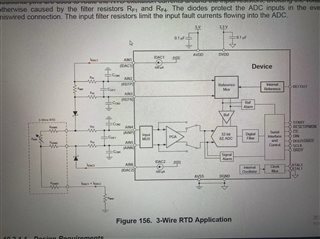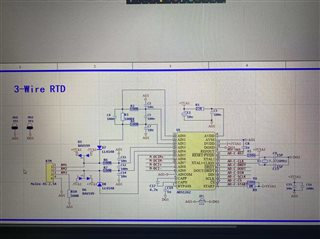Other Parts Discussed in Thread: REF7025
Hi Team,
I designed a set of circuit by referring to the three-line RTD circuit in THE data sheet of ADS1262. I want to use ADS1262 channel AIN0-AIN5 to measure RTD, and the remaining channel AIN6-9 to measure two groups of differential signals, which need 2.5V as a reference. The circuit in the figure should take the voltage on the Rref as the external Reference input, which is inconsistent with my requirements. I would like to ask, according to the block diagram, can I configure the Reference Mux to use the internal Reference (2.5V) as the chip Reference voltage, and use the two sets of voltage values of the three-line resistor as measured values? The two sets of differential signals require an accuracy of 0.02%.


Beat Regards,
Tom Liu


